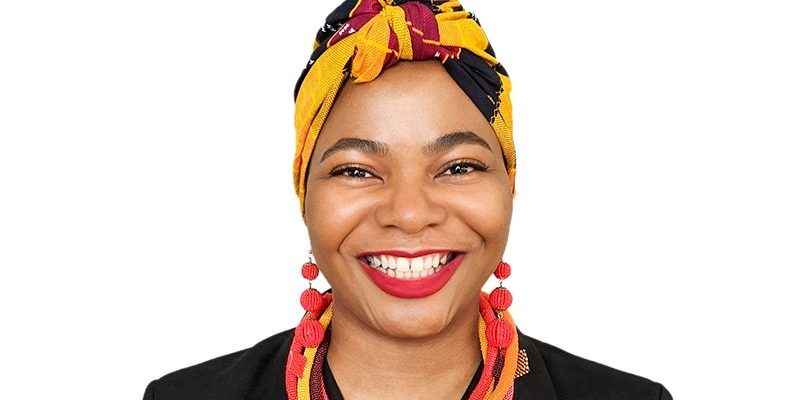Medical schools head into 2022 with a mandate for measurable change in trying to eliminate racial inequities in physician education.
In many cases, faculty and students say, the change is being led by students, emboldened, in part, by the racial tumult of 2020 and the COVID-19 pandemic, which showed the stark contrast among racial groups in healthcare access and outcomes.
Students’ voices are more often being heard and acted upon in a way that has run counter to the historic power structure of medical schools.

Naomi Nkinski
Naomi Nkinski, a fourth-year medical and master’s of public health student at the University of Washington (UW) School of Medicine in Seattle, is among the voices campaigning for reforms.
In her first year of medical school, Nkinski was taught, as students before her, that the estimatedglomerular filtration rate (eGFR) for kidney function was different for Black and White people and that a coefficient for race was included when scoring kidney function, she told Medscape Medical News.
This algorithm has a direct effect on outcomes, as an adjusted score delays the ability of Black people to get diagnosed with kidney disease or be eligible for a kidney transplant.
This didn’t make sense to Nkinski, as she knew there was nothing biologically different between the kidneys of Black and White people.
So she started asking questions in a lecture for explanation regarding what coefficient to use for a person of mixed race or when a Black person’s kidney was transplanted into a White person.
The lecture got very heated, she said, and it set off a series of meetings with faculty and administration.
Two years later, in the summer of 2020, UW changed its protocols and now excludes race as a variable in determining kidney function. The medical school acknowledged her advocacy as a driver for change, according to the UW Department of Global Health newsletter. Changes were also made at other medical schools across the country after similar challenges.
Nkinski, who notes that the eGFR is only one small step in addressing inequities, credits the UW faculty for taking her questions seriously and for advocating on her behalf among colleagues.
“I don’t think it would have happened if there weren’t also faculty that were willing to take learning as a bidirectional process. The physicians learn from students and the students learn from physicians,” she said.
Taking the Battle Personally
She also acknowledges resentment that change was so hard.
“The same people I had to argue the most against and were the most threatening toward me are now publishing papers about how amazing this [eGFR calculation] change is,” Nkinski said.
For Nkinski, who said she is one of five Black students in her class of about 100, the fight is personal.
“It’s a huge emotional and intellectual burden to feel like you’re having to argue with people about why your life matters and why you should be seen as fully human,” she said.
She said about race-based protocols lacking strong evidence, “They’re talking about me. They’re talking about my body, my family, my community, and they’re asking me to perpetuate these same harms on them.”
Nkinski continues to help build advocacy networks and is an organizer of the Institute for Healing and Justice in Medicine. Launched in 2020, the institute is an online community and a research hub centered on publishing research and stories related to social justice and community activism in Western medicine and public health.
She said the work of eliminating inequities is undervalued, and because it is often led by students, it’s also uncompensated.
“The people who should be leading this work are the admins and the leaders in medical education.”
Understanding the “Why” Behind Racial Inequities
Jaya Aysola, MD, assistant dean of inclusion and diversity at the Perelman School of Medicine at University of Pennsylvania in Philadelphia, said the why behind teaching students that outcomes are different among races is often missing in medical education.

Dr Jaya Aysola
“When we see differences in race/ethnicity by burden of disease or unequal outcomes, it is important to note that difference by race, but the moment we infer that that difference in race is because of genetic predisposition, that’s where we go wrong,” she told Medscape Medical News.
She offered the example of adjusting for race in life expectancy research and discussions.
If the conversation stops there, she said, the assumption is that there’s a biological reason for differences in life expectancy by race. It’s critical to examine the systemic and environmental factors that lead to differences in life expectancy.
That understanding has to start in medical school, as the students will go on to lead their fields. “What’s really scary is when the US gets it wrong, there’s an added layer of problems, because we’re exporting our science to the rest of the world,” Aysola said.
Learning Social Determinants on Day 1
Getting to the root of racial inequities has gained prominence at Tufts University School of Medicine in Boston, Massachusetts.
Now, on the first day of medical school, students begin to learn about poverty, healthcare access, racism, and the social determinants of health. Until recently, students would start with molecular biology and other hard sciences and hear about social determinants further into their training.
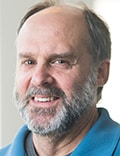
Dr Richard Glickman-Simon
Richard Glickman-Simon, MD, assistant professor of public health and community medicine at Tufts, a designer of that curriculum, told Medscape Medical News, “We want to give them the context of what it’s like to be a patient.”
Students also learn about the generations of harm that have fed the current inequities.
“We make it clear that the medical institution historically has been a very energetic player in institutional racism,” he said.
School leaders are trying to keep up with the students’ timeline for change, he said, but developing the faculty training for current faculty or hiring faculty with expertise in the new curriculum will not come quickly.
Faculty development speaks to broader pipeline issues as well.
Building a diverse medical faculty, in general, remains challenging nationwide. A perspective piece in The New England Journal of Medicine citesAssociation of American Medical Colleges (AAMC) data that show little diversity among faculty: 5.5% of medical school faculty are Hispanic, Latinx, or of Spanish origin; 3.6% are Black; and 0.2% are Native American or Alaskan Native.
The news is more positive among students. According to the AAMC, the number of Black first-year students increased by 21% in 2021. Black students made up 11.3% of first-year students in 2021, up from 9.5% last year.
First-year Hispanic, Latino, or Spanish students increased by 7.1%. However, American Indian or Alaska Native first-year students declined by 8.5% and now make up only 1% of first-year students.
Shark Tank Idea for Broadening Pipeline
Building a more inclusive pipeline was at the heart of a Shark Tank-like presentation in September to the American Medical Association (AMA) by Jerrod Writt, MD, MBA, a family physician with Kaiser Permanente in Sacramento, California.

Dr Jerrod Writt
His team’s project called AvenueM (M for medicine) was one of three chosen this year by the AMA from 135 applicants to receive a $20,000 grant.
AvenueM addresses the barriers of cost and complex transitions for first-generation and socioeconomically disadvantaged students who want to become physicians.
Writt told Medscape Medical News, “Half of historically underrepresented groups start in community college, and medical students who choose community college are more likely to choose primary care.”
The team proposes a medical school pathway that starts with community colleges. Under their plan, through mentorship and partnerships, some students who start in community colleges would earn early acceptance at 4-year undergraduate schools and then medical schools.
The pilot program, with support from the University of California (UC), Davis, and Kaiser Permanente, is designed for seamless transition from community colleges near the university to its undergraduate programs and then UC-Davis School of Medicine. Graduating medical students would be close to home, increasing the likelihood they would practice locally. The goal is that the model could be replicated at other medical schools around the country.
Writt said he hopes the first students will be ready to start the pathway in the 2022–2023 academic year.
Public-Private Collaboration
Partnerships to address inequities on a statewide scale are in full swing in Massachusetts.
There, four medical schools — Tufts, Harvard Medical School, the University of Massachusetts Medical School, and Boston University School of Medicine — are joining forces with the state’s Department of Public Health and the Massachusetts Medical Society (MMS) to address inequities.
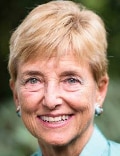
Carole Allen
MMS President Carole Allen told Medscape Medical News the collaboration “is extraordinary, and it speaks to the magnitude of the importance of this issue.”
These are schools that are essentially competitors, but on this issue they are united, Allen said. Last summer, the partners created a blueprint entitled, “Dismantling Racism in Medicine.”
The first principle addresses acknowledgment of historic harms and calls for understanding “the history of racism in medicine, the role of privilege, and our implicit and explicit biases.”
Allen also sees a new momentum in prioritizing policies that work to end racism in medical education.
She said schools are becoming more open to student initiatives, and students are being treated more as equals and respected for their “lived experiences.” “That’s relatively new that people view lived experience as valid data,” she said.
However, support for prioritizing an end to racial inequities has pockets of resistance nationally, she said. “We’re calling out racism that has been around for a long time,” she said. “People don’t like being called out for their behaviors and attitudes.”
Developing Competencies
The AAMC has created a framework of actionable steps that every medical school can take to address biases in medicine.
Accountability is an important part of the reform.
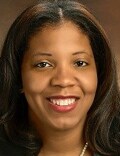
Kamilah Weems
Kamilah Weems, director of strategic initiatives and partnerships for the AAMC, told Medscape Medical News the AAMC is set to release a set of cross-continuum tier competencies from undergraduate medical education through faculty. The tiers add competencies as concepts are mastered in areas of diversity, equity, and inclusion.
The system assesses how students, residents, physicians, and faculty are becoming more competent in what they know regarding equity, diversity and inclusion, and antiracism efforts.
“These are part of a series,” she said. “One of our main roles is to develop these sorts of tools and resources for our member schools.”
Among the challenges, Weems said, is learning what it means to be competent in these areas, an answer that will become clearer over time.
Weems acknowledged that AAMC must “walk the walk” as well, and has developed a system of internal review on its own measures to address biases within the organization. Weems is the inaugural chair of the self-review panel.
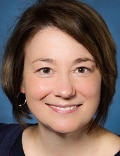
Katherine McOwen
Katherine McOwen, AAMC’s senior director of educational affairs, added, “I think it’s a hopeful time in medical education. There are many committed leaders who are going to make the change and stick to it.”
She said within 5 years, she would expect to see more schools turning to holistic admissions and away from admissions based on standardized exams.
Schools are making more concerted effort to diversify faculty, McOwen added, and those changes should be evident within that time frame in undergraduate and graduate medical education.
Long-Lasting Change
Allen said efforts to build diversity and inclusion will have to be different from projects for which leaders put in place policies and then move on to the next challenge.
“We’re disrupting and transforming. This is not incremental change,” she said. “This is going to be a significant and long-lasting change.”
She notes the transformation is happening parallel to the pandemic and the booming growth of telemedicine, all competing for medicine’s attention and funding. Ensuring that equity in medicine is a priority will take unwavering resolve.
“I don’t think the young people will let us lose our commitment,” she said.
Nkinski, Aysola, Allen, Glickman-Simon, Weems, McOwen and Writt report no relevant financial relationships.
Marcia Frellick is a freelance journalist based in Chicago. Follow her on Twitter at @mfrellick.
For more news, follow Medscape on Facebook, Twitter, Instagram, and YouTube.
Source: Read Full Article
